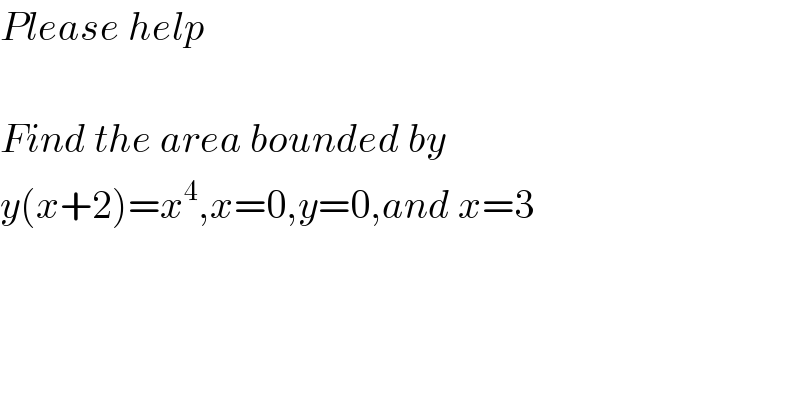
Question and Answers Forum
Question Number 32756 by NECx last updated on 01/Apr/18

Answered by MJS last updated on 02/Apr/18
![y(x)=(x−2)^4 area between x−axis (y=0) and y(x) in [0;3], no change of sign ∫_0 ^3 (x−2)^4 dx=(1/5)(x−2)^5 ∣_0 ^3 = =(1/5)(1−(−2)^5 )=((33)/5)](Q32770.png)
Commented by NECx last updated on 02/Apr/18

Commented by MJS last updated on 02/Apr/18
![I understood that it′s y(x+2), not y×(x+2). If this is true, y(x+2)=x^4 ⇒ y(x)=(x−2)^4 [y(x)=(x−2)^4 with x=t+2= =y(t+2)=(t+2−2)^4 =t^4 ] if it′s y×(x+2)=x^4 ⇒ ⇒ y=(x^4 /(x+2))=x^3 −2x^2 +4x−8+((16)/(x+2)) still no change of sign in [0;3] ∫_0 ^3 x^3 −2x^2 +4x−8+((16)/(x+2))dx= =(1/4)x^4 −(4/3)x^3 +2x^2 −8x+16ln ∣x+2∣∣_0 ^3 = =−((15)/4)+16ln n−16ln 2= =−((15)/4)+16ln (5/2)≈10.91](Q32774.png)
Commented by NECx last updated on 02/Apr/18

